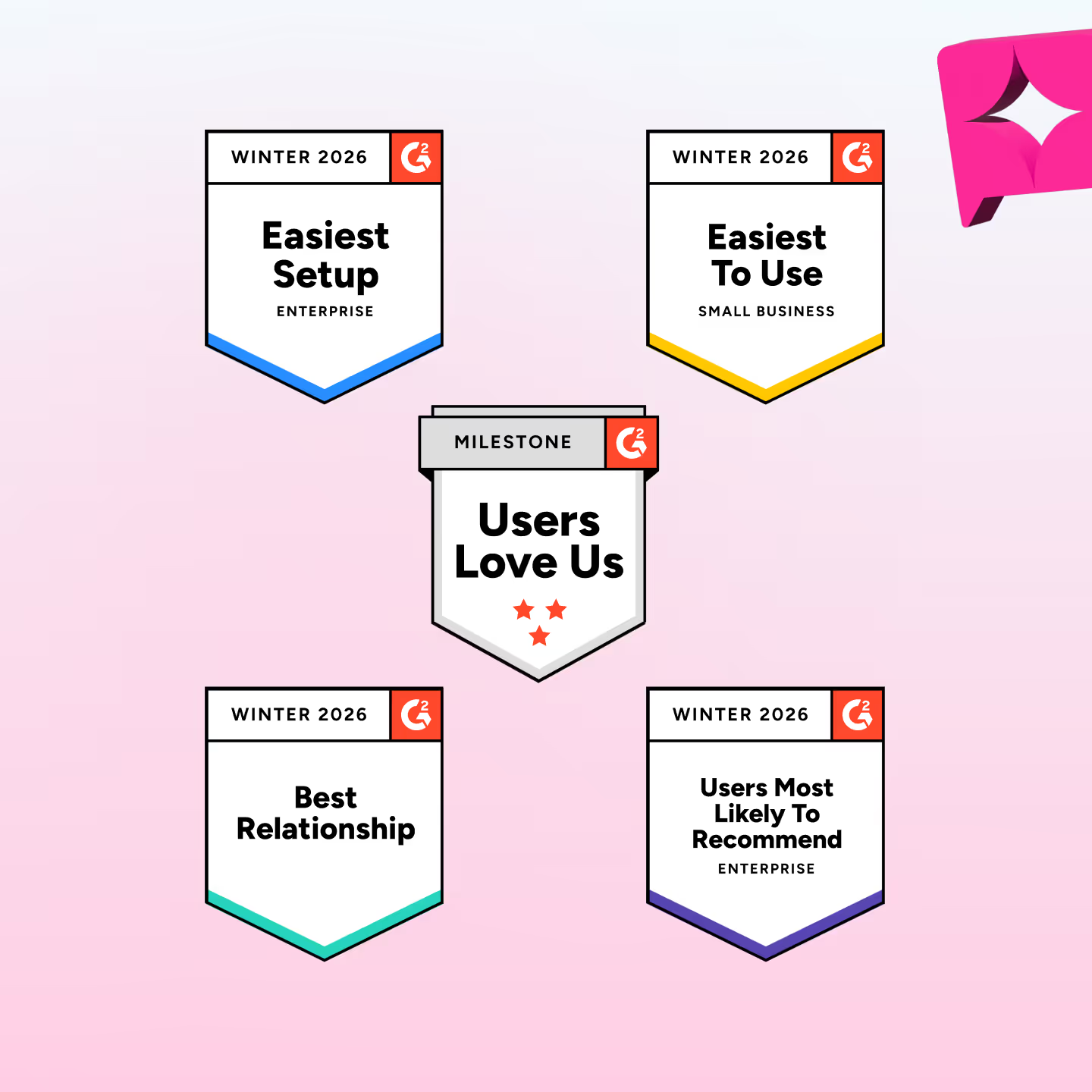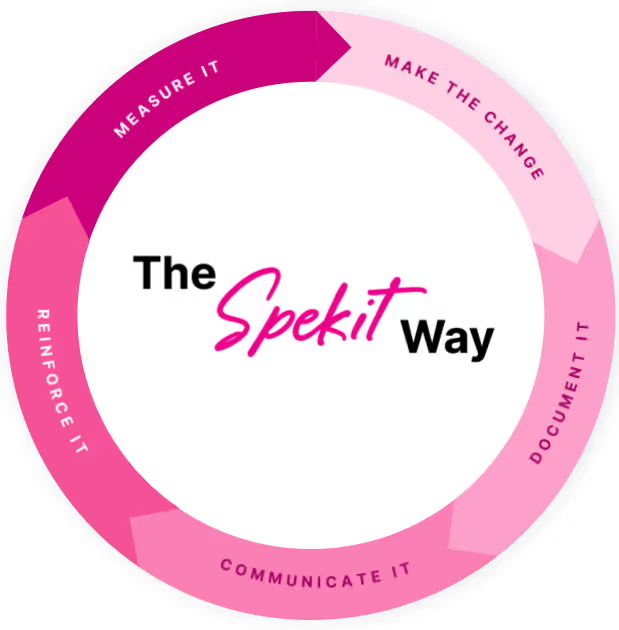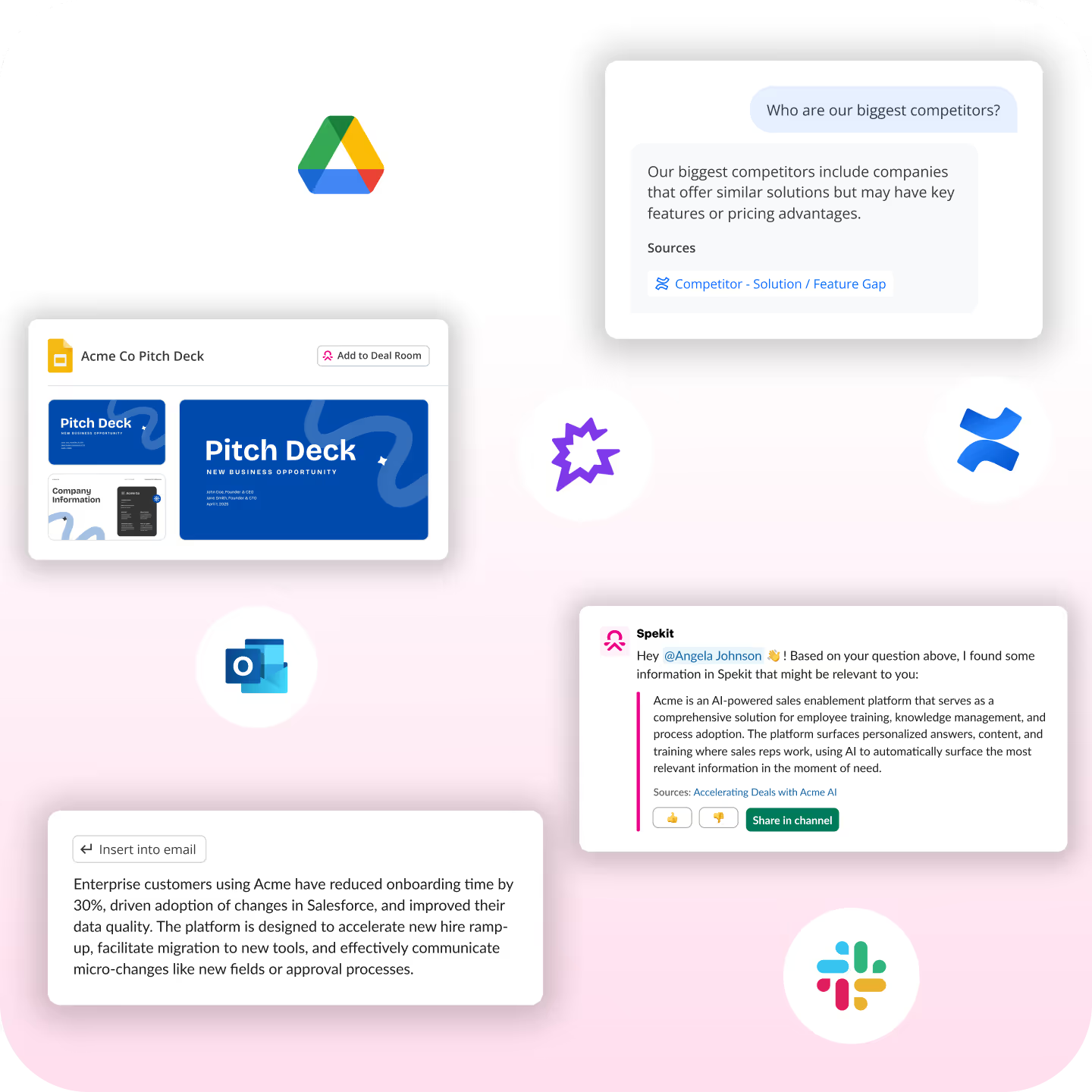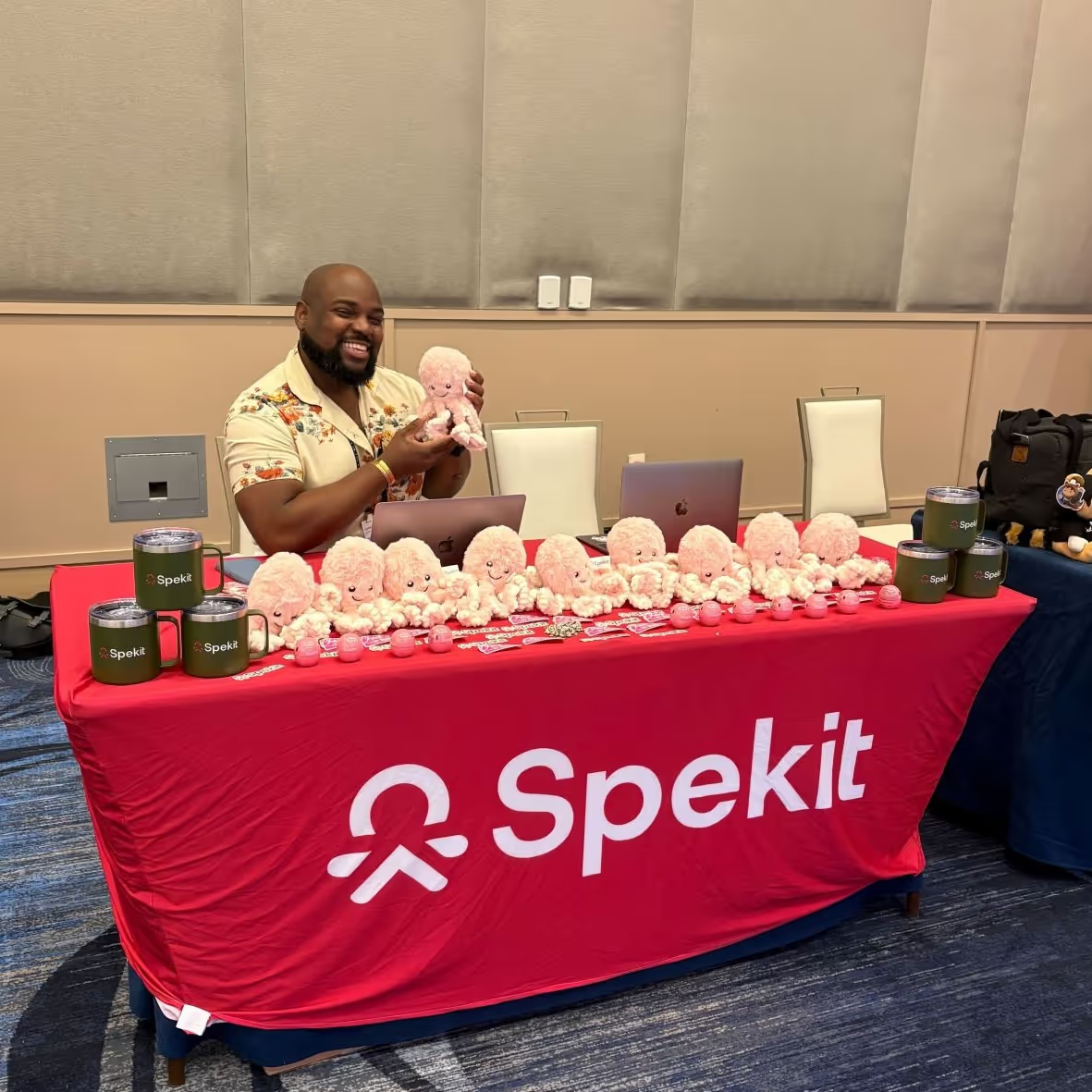Why should you choose Spekit?
Spekit is the next-gen enablement platform built for this reality, turning real-time knowledge access into a competitive advantage reps leverage to learn, grow, and sell at the speed of business.

We lead the industry in adoption rates
Spekit was founded on a simple, yet radical, principle other enablement platforms overlook: for knowledge and training to be truly effective, it must be hyper-relevant, trustworthy, and impossibly easy to access in the moment of need.
Providing direct rep value while solving the content accuracy and gaps challenge is what we do. That’s why we have the highest daily active usage and, in turn, the fastest ROI.

We pioneered Just-In-Time Enablement
In 2018, our founders didn't just create a new platform, they created a new category: Just-in-Time Enablement.
This vision to deliver Enablement in the Flow of Work™ with a single platform that combines the best of DAP, KMS, CMS, and LMS, is why no one else comes close to our ability to empower reps with the exact content, learning, and coaching they need, right when they need it.
Clunky content repositories keep reps from quickly finding what they need—so they give up.
Critical communications are missed by reps drowning in information overload.
Reps can’t search for what they don’t remember—so they use what they shouldn’t.

Context x AI is our superpower
Spekit’s unified platform creates a powerful, intelligent ecosystem by weaving context, AI, and agents in a continuous feedback loop designed to make every rep more effective, every day.
By understanding what reps are doing in any application (our magic!), Spekit predicts their enablement needs before they have to ask. As reps engage with recommendations and coaching, the system learns what performs best, becoming smarter and more personalized over time.

Change management, built in by default
In today's Change Economy, effective change enablement is essential. While other platforms treat it as an afterthought, our integrated approach saves hours, eliminates noise, and keeps your team ahead.
From embedded alerts to real-time notifications, you can communicate, reinforce, and measure the adoption of new processes, product updates, and competitive insights to move faster than ever before.

Simple, yet Spektacular, is our DNA
Seamless, intuitive, automated experiences are the greatest differentiator in capturing a rep's attention, which is the most critical factor for adoption.
Instead of piling on features, we obsess over efficiency with the single goal of helping reps find exactly what they need to move deals, without disrupting selling.

We're the fastest to implement and maintain
Founded by former BizOps leaders who spent years evaluating and managing software, ease of setup and implementation is engrained in everything we do.
Minimal integrations and IT involvement, AI-driven content creation (eliminating extensive tagging and manual maintenance), out-of-the-box content for sales playbooks and tool training, and more means you can rollout faster than any enablement platform on the market.
from kickoff call to tech integration, teams like InMoment setup Spekit in hours.
faster average implementation time vs. competing enablement solutions according to G2.
of reps began actively using Spekit as the go-to resource for answers within the first 30 days.


The kind of support team you'll want to steal
Our 'Simple, yet Spektacular' company value is engrained in everything we do. From your first call to every milestone after, our Customer Success team is by your side with strategic guidance, content support, and real-time feedback to help you grow stronger over time.
It's why our reviews don’t just mention features, they mention names.
Experience Just-in-Time Enablement
Easy to adopt. Even easier to love. See why fast-moving revenue teams choose Spekit.




















